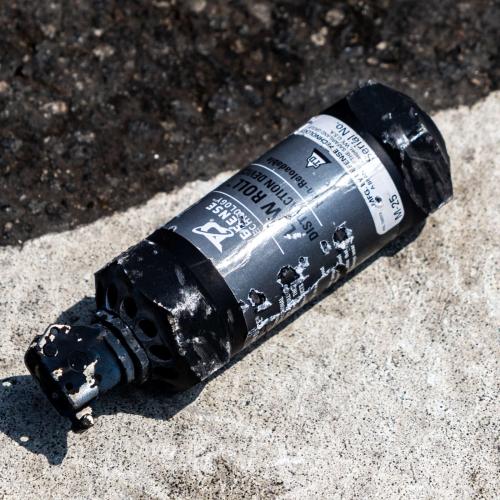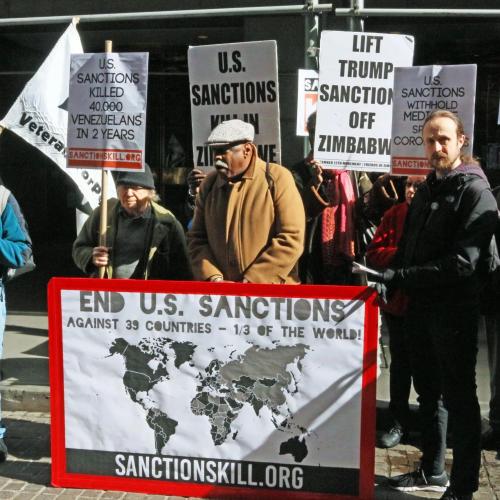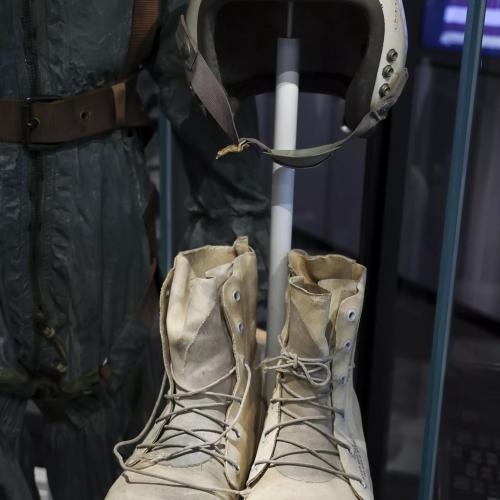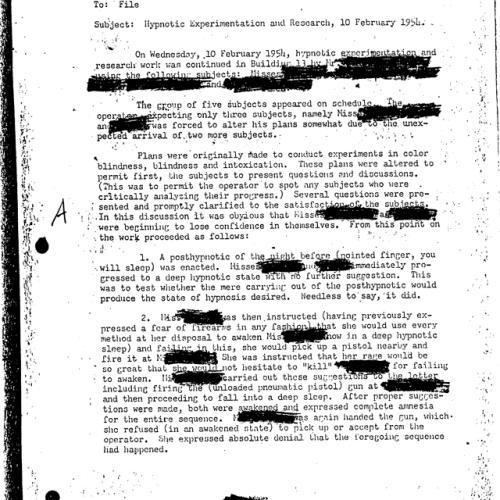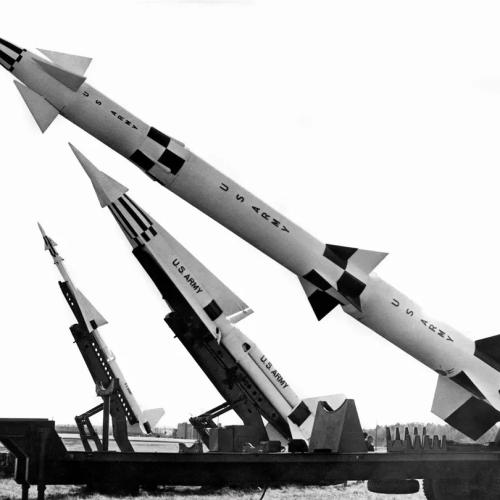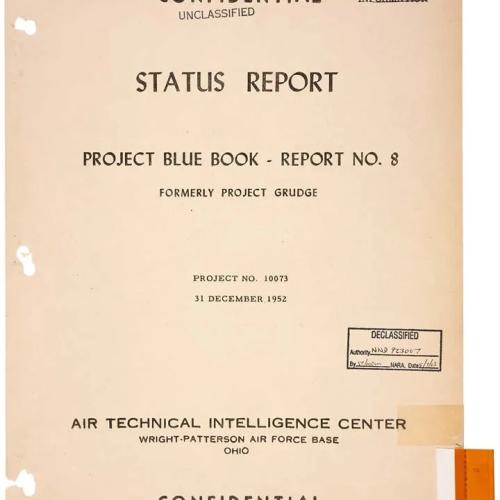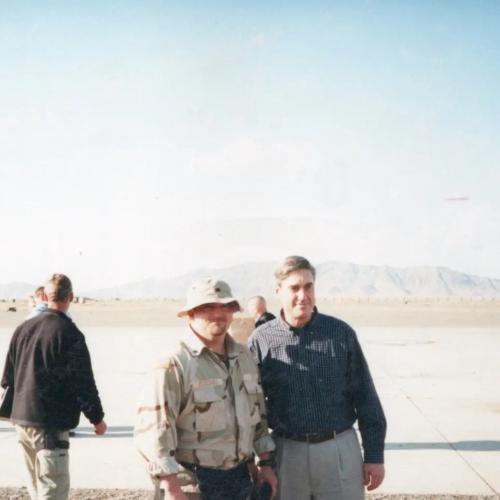Military Corruption News Stories
Below are key excerpts of revealing news articles on military corruption from reliable news media sources. If any link fails to function, a paywall blocks full access, or the article is no longer available, try these digital tools.
For further exploration, delve into our comprehensive Military-Intelligence Corruption Information Center.
For the fifth time since 2008, Russia has proposed to negotiate with the U.S., this time in proposals made by President Vladimir Putin on June 14, 2024. Four previous times, the U.S. rejected the offer of negotiations. The 30-year U.S. project, hatched originally by Cheney and the neocons ... has been to weaken or even dismember Russia, surround Russia with NATO forces, and depict Russia as the belligerent power. [One] Russian proposal for negotiations came from Putin following the violent overthrow of Ukraine’s President Viktor Yanukovych in February 2014, with the active complicity if not outright leadership of the U.S. government. The post-coup government invited me for urgent economic discussions. When I arrived in Kiev, I was taken to the Maidan, where I was told directly about U.S. funding of the Maidan protest. The violent coup induced the ethnic-Russia Donbas region of Eastern Ukraine to break from the coup leaders, many of whom were extreme Russophobic nationalists, and some in violent groups with a history of Nazi SS links in the past. Almost immediately, the coup leaders took steps to repress the use of the Russian language even in the Russian-speaking Donbas. The government in Kiev [deployed] neo-Nazi paramilitary units and U.S. arms. In the course of 2014, Putin called repeatedly for a negotiated peace, and this led to the Minsk II Agreement in February 2015 based on autonomy of the Donbas and an end to violence by both sides. Russia did not claim the Donbas as Russian territory, but instead called for autonomy and the protection of ethnic Russians within Ukraine. The UN Security Council endorsed the Minsk II agreement, but the U.S. neocons privately subverted it.
Note: More than 1 million people on both sides have been either killed or injured. This article was written by Jeffrey Sachs, world-renowned economist and public policy analyst. This isn’t about defending Russia, but highlighting how US foreign policy has exploited Ukraine for strategic interests—fueling ongoing conflict rather than promoting peace. Azov Battalian is a neo-nazi group tied to credible human rights violations, a group that the CIA directly supported with weapons and military training leading up to the 2014 Maidan coup.
Children on top of rubble… playing with ammunition casings. A close look reveals where they come from -- printed on the side: USA... DOD for the Department of Defence. Hala Rharrit was an American diplomat who ... worked on human rights and counterterrorism. Part of her job was to monitor Arab press and social media to document how America's role in the war was perceived in the Middle East. Daily reports Rharrit sent to senior leadership in Washington [contained] gruesome images: Hala Rharrit: "I would show the complicity that was indisputable. Fragments of U.S. bombs next to massacres of ... mostly children. And that's the devastation. It's been overwhelmingly children ... I would show images of children that were starved to death. I was basically berated, 'Don't put that image in there. We don't wanna see it.'" Three months into the war ... she was told her reports were no longer needed. The U.S. has sent $18 billion in American military assistance to Israel since the war began, largely in the form of taxpayer-funded weapons. Most of the bombs come from America. Most of the technology comes from America. And all of the fighter jets, all of Israel's fixed-wing fleet - comes from America. Andrew Miller was the deputy assistant secretary of state for Israeli-Palestinian affairs. He ... has since become the highest ranking Biden administration official to go public with his concerns about the U.S. role in the war. The State Department issued a report saying it is "reasonable to assess" that Israel may have used American weapons in violation of international law. Hala Rharrit: "Protests began erupting in the Arab world ... with people burning American flags. We worked so hard after the war on terror to strengthen ties with the Arab world."
Note: A new study shows that death feels imminent for 96% of children in Gaza. War destroys, yet these powerful real-life stories show that we can heal, reimagine better alternatives, and plant the seeds of a global shift in consciousness to transform our world.
The Defense Advanced Research Project Agency, the Pentagon's top research arm, wants to find out if red blood cells could be modified in novel ways to protect troops. The DARPA program, called the Red Blood Cell Factory, is looking for researchers to study the insertion of "biologically active components" or "cargoes" in red blood cells. The hope is that modified cells would enhance certain biological systems, "thus allowing recipients, such as warfighters, to operate more effectively in dangerous or extreme environments." Red blood cells could act like a truck, carrying "cargo" or special protections, to all parts of the body, since they already circulate oxygen everywhere, [said] Christopher Bettinger, a professor of biomedical engineering overseeing the program. "What if we could add in additional cargo ... inside of that disc," Bettinger said, referring to the shape of red blood cells, "that could then confer these interesting benefits?" The research could impact the way troops battle diseases that reproduce in red blood cells, such as malaria, Bettinger hypothesized. "Imagine an alternative world where we have a warfighter that has a red blood cell that's accessorized with a compound that can sort of defeat malaria," Bettinger said. In 2019, the Army released a report called "Cyborg Soldier 2050," which laid out a vision of the future where troops would benefit from neural and optical enhancements, though the report acknowledged ethical and legal concerns.
Note: Read about the Pentagon's plans to use our brains as warfare, describing how the human body is war's next domain. Learn more about biotech dangers.
In a landmark verdict cheered by human rights defenders around the world, a federal jury in Virginia found a U.S. military contractor liable for the torture of three prisoners at the notorious Abu Ghraib prison during the invasion and occupation of Iraq in the early 2000s. The jury ordered CACI Premier Technology to pay each of the three Iraqi plaintiffs $3 million in compensatory damages and $11 million in punitive damages, for a total of $42 million. It is the first time that a civilian contractor has been found legally responsible for abusing Abu Ghraib detainees. The lawsuit against CACI—filed in 2008 by the Center for Constitutional Rights (CCR) on behalf of Suhail Al Shimari, Asa'ad Al Zuba'e, and Salah Al-Ejaili—alleged that company officials conspired with U.S. military personnel in subjecting the plaintiffs to torture and other crimes. Dozens of Abu Ghraib detainees died in U.S. custody, some of them as a result of being tortured to death. Abu Ghraib prisoners endured torture ranging from rape and being attacked with dogs to being forced to eat pork and renounce Islam. A separate U.S. Army report concluded that most Abu Ghraib prisoners were innocent, with the Red Cross estimating that between 70-90% of inmates there were wrongfully detained. These include women who were held as bargaining chips to induce suspected militants to surrender. Brig. Gen. Janis Karpinski, the prison's commanding officer, was demoted. No other high-ranking military officer faced accountability for the abuse.
Note: Learn more about US torture programs in our comprehensive Military-Intelligence Corruption Information Center. War destroys, yet these powerful real-life stories show that we can heal, reimagine better alternatives, and plant the seeds of a global shift in consciousness to transform our world.
Last year, the US Commission on National Defense Strategy published its final report, creating intense buzz in Washington. “The threats the United States faces are the most serious and most challenging the nation has encountered since 1945,” the report warned. To meet the challenge, “the US government needs to harness all elements of national power,” starting with a 5% boost to the Pentagon budget, currently at $886 billion. Congress created the bipartisan commission as “an independent body.” Yet some of the members of the commission are connected to think tanks and the defence contractors that fund them: from Boeing to General Electric, Northrop Grumman to Lockheed Martin. If taxpayers go along with the military buildup advocated by the report, these and other firms stand to profit handsomely. The Atlantic Council recently published its own nuclear report, which called for boosting funding for missile-defense technologies. The Atlantic Council has received at least $10 million from major Pentagon contractors that manufacture nuclear weapons and missile-defense systems. There are so many reports paid for by vested interests, commissions on which they sit, and governments getting their piece, it’s hard to keep track. Consider Michèle Flournoy, a former Pentagon official who founded the Center for New American Security and sits on its board. CNAS published a report in September titled “Integration for Innovation” as part of its “defense technology task force.” Executives from RTX (which contributed at least $450,000 to CNAS), Lockheed Martin ($600,000), Palantir ($175,000), Leidos ($300,000), and Booz Allen ($250,000) all directly contributed as members of the task force, even as they benefit from every single proposal in it.
Note: Learn more about arms industry corruption in our comprehensive Military-Intelligence Corruption Information Center. For more, read our concise summaries of news articles on military corruption.
In 2023, the Government Accountability Office revealed that a government contractor had lost 2 million spare parts for the F-35 fighter jet, together worth tens of millions of dollars, since 2018. The Department of Defense followed up on only 20,000 of those parts. Military officials don't know how many F-35 spare parts exist in total, paid for by American taxpayers but spread out at contractor warehouses around the world. The 1985 aircraft carrier scandal continued this pattern of failure to keep track of valuable materiel. After a group of smugglers was caught stealing F-14 parts to sell to Iran, the Pentagon ran an audit on the spare parts stored on aircraft carriers. Auditors found the Navy had lost track of $394 million in parts between 1984 and 1985. Not to worry! It turns out only about $7 million in parts had been stolen by the gunrunners, and the remaining $387 million were misidentified or misplaced. Perhaps the most infamous cases of waste occurred in Afghanistan, where the United States spent 20 years trying to prop up a friendly Afghan government only to have Taliban rebels sweep the capital in a lightning-quick August 2021 offensive. Although the U.S. military extracted all of its own gear, it left $7.12 billion of American-provided equipment with the doomed Afghan army; it soon fell into the Taliban's hands. Images of Taliban fighters riding around with captured vehicles became a symbol of American failure.
Note: Learn more about unaccountable military spending in our comprehensive Military-Intelligence Corruption Information Center. For more, read our concise summaries of news articles on military corruption.
The United States prepared a rebel force to join the offensive that overthrew the regime of Bashar al-Assad, fighters have claimed. British and American-trained fighters in the Revolutionary Commando Army (RCA), a group aligned against Islamic State, were told “this is your moment” in a briefing by US Special Forces before Assad was ousted. The RCA revealed it had been told to scale-up its forces and “be ready” for an attack that could lead to the end of the Assad regime. Having worked with the RCA to dismantle the Islamic State’s Syrian caliphate, the US still pays its fighters a salary to prevent the terror group’s resurgence. Syria’s 13-year civil war ... threw up a bewildering array of militias and alliances, most of them backed by foreign powers. It would therefore be only one of many ironies if the US has been in an effective alliance with a group like HTS, which was al-Qaeda’s affiliate in Syria until it broke away in 2017. It is equally ironic that rebel factions supported by the US are co-operating with those backed by Turkey in places like Palmyra, while fighting against each other elsewhere in the country. While Turkey opposed the US-supported Kurds in Syria, it was in full agreement about the threat posed by Isis. In recent days, the US has carried out dozens of air strikes on Isis positions even as its Kurdish allies have come under sustained attack from Syrian factions supported by Turkey.
Note: Watch former CIA director John Brennan suggest that the Syrian rebels we previously supported now pose more of a threat to Syrians and American interests. As recently as 2016, Syrian militias armed by the Pentagon were fighting with Syrian militias armed by the CIA. Learn more about war failures and lies in our comprehensive Military-Intelligence Corruption Information Center.
Videos have surfaced online of Syria’s new justice minister, Shadi al-Waisi, overseeing the execution of two women in 2015 over charges of adultery and prostitution. Al-Waisi is part of the new Syrian government led by Hayat Tahrir al-Sham (HTS), which took power after ousting former President Bashar al-Assad on December 8. In one video, al-Waisi is seen reading a ruling that the woman was found guilty of “corruption and prostitution” and sentencing her to death. In the other video, al-Waisi appears to be carrying a gun and tells a woman to sit down as she’s pleading for her life. Once she moves down, another armed man shoots her in the head. At the time, al-Waisi was working as a “judge” enforcing Sharia law in areas of Syria’s northwest Idlib province that were under the control of the al-Nusra Front, the al-Qaeda affiliate in Syria that merged with other Islamist groups in 2017 to form HTS. HTS and its leader, Abu Mohammed al-Julani, who has been going by his real name Ahmad al-Sharaa, have tried to present themselves as moderates since taking over Syria despite their al-Qaeda past. An HTS official speaking to Verify-Sy downplayed the video, insisting the group has “moved beyond” such practices. The US supported the HTS takeover of Syria even though the group still being listed as a foreign terrorist organization by the State Department. US officials also seem to be buying the rebranding campaign despite HTS’s brutal history.
Note: Watch former CIA director John Brennan suggest that the Syrian rebels we previously supported now pose more of a threat to Syrians and American interests. As recently as 2016, Syrian militias armed by the Pentagon were fighting with Syrian militias armed by the CIA. Learn more about war failures and lies in our comprehensive Military-Intelligence Corruption Information Center.
The Department of Defense (DoD) has failed for the last 33 years to pass a financial audit. With assets that are approximated at $3.8 trillion probably maybe ... the DoD is surpassed by only JPMorgan/Chase and its $4.2 trillion as the largest U.S. entity when ranked by assets. According to a General Accountability Office (GAO) report last year, “DOD financial management has been on our High-Risk List since 1995. DOD’s spending makes up about half of the federal government’s discretionary spending. Its physical assets comprise almost 68 percent of the federal government’s physical assets. DOD has not yet received an audit opinion on its annual department-wide financial statements. It has been unable to accurately account for and report on its spending or physical assets.” The DoD’s Number 2 largest supplier, Raytheon and the Government’s Number 31 largest supplier, Dell, both agreed to pay millions to resolve Department of Justice (DoJ) investigations this past October and November. The DoJ reported that Raytheon agreed to pay more than $950 million to resolve the government’s investigations into a major government fraud scheme involving defective pricing on certain government contracts and violations of the Foreign Corrupt Practices Act (FCPA) and the Arms Export Control Act (AECA) and its implementing regulations, the International Traffic in Arms Regulations (ITAR).
Note: Learn more about unaccountable military spending in our comprehensive Military-Intelligence Corruption Information Center. For more, read our concise summaries of news articles on military corruption.
Matthew Livelsberger, a Green Beret and the main suspect in the Cybertruck attack in Las Vegas, reportedly sent a manifesto-like email to retired U.S. Army intelligence officer Sam Shoemate just days before a car bomb exploded in front of Trump International Hotel. Shoemate revealed the email on The Shawn Ryan Show podcast, describing its contents as allegations of advanced drone technology, a cover-up of a 2019 airstrike in Afghanistan, and claims of being under U.S. government surveillance. Livelsberger allegedly [detailed] concerns about advanced drones using "GDIC propulsion systems," which he described as anti-gravity technology. Livelsberger claimed that the U.S. and China developed and deployed the drones. He alleged that China launched them from submarines along the U.S. East Coast, calling them "the most dangerous threat to national security" because of their stealth, ability to evade detection and unlimited payload capacity. Livelsberger also referenced his involvement in a 2019 U.S. airstrike in Nimruz Province, Afghanistan. He claimed the operation, which targeted drug facilities, caused civilian casualties, including women and children, and was covered up by U.S. authorities. The allegations align with a 2019 U.N. report criticizing the strikes as unlawful. Livelsberger said the incident pushed him to speak out. Additionally, he accused the FBI and Homeland Security of monitoring and tracking him, describing efforts to avoid being detained.
Note: Watch this episode of the The Shawn Ryan Show. For more along these lines, read our concise summaries of news articles on UFOs and military corruption.
The two men who carried out apparent terror attacks on New Year’s Day — killing 15 people by plowing a pickup truck into a crowd of New Year’s revelers in New Orleans, and detonating a Tesla Cybertruck outside a Trump hotel in Las Vegas — both had U.S. military backgrounds, according to the Pentagon. From 1990 to 2010, about seven persons per year with U.S. military backgrounds committed extremist crimes. Since 2011, that number has jumped to almost 45 per year. Military service is also the single strongest individual predictor of becoming a “mass casualty offender,” far outpacing mental health issues, according to a ... study of extremist mass casualty violence. From 1990 through 2023, 730 individuals with U.S. military backgrounds committed criminal acts that were motivated by their political, economic, social, or religious goals. From 1990 to 2022, successful violent plots that included perpetrators with a connection to the U.S. military resulted in 314 deaths and 1,978 injuries — a significant number of which came from the 1995 bombing of the Murrah Federal Building in Oklahoma City. [Matthew] Livelsberger’s weaponized Tesla Cybertruck was rented from Turo, the vehicle-sharing service that was also used in the New Orleans attack. [Shamsud-Din] Jabbar reportedly used the Turo app. Both Livelsberger and Jabbar spent time at the military base formerly known as Fort Bragg and now called Fort Liberty, a massive Army garrison in North Carolina.
Note: For more along these lines, read our concise summaries of news articles on terrorism and military corruption.
Nearly one in five of the world’s children live in areas affected by conflicts, with more than 473 million children suffering from the worst levels of violence since the second world war, according to figures published by the UN. The UN humanitarian aid organisation for children, Unicef, said on Saturday that the percentage of children living in conflict zones around the world has doubled from about 10% in the 1990s to almost 19%, and warned that this dramatic increase in harm to children should not become the “new normal”. With more conflicts being waged around the world than at any time since 1945, Unicef said that children were increasingly falling victim. Citing its latest available data, from 2023, the UN verified a record 32,990 grave violations against 22,557 children, the highest figures since the security council mandated monitoring of the impact of war on the world’s children nearly 20 years ago. The death toll after nearly 15 months of Israel’s war in Gaza is estimated at more than 45,000 and out of the cases it has verified, the UN said 44% were children. In Ukraine, the UN said it had verified more child casualties during the first nine months of 2024 than during all of 2023. Unicef drew attention in particular to the plight of women and girls, amid widespread reports of rape and sexual violence in conflicts. It said that in Haiti there had been a 1,000% increase in the number of reported incidents of sexual violence against children over the course of 2024.
Note: UNICEF's recent findings reveal that human conflicts are behind 80% of the world's humanitarian needs, calling 2024 one of the worst years in history for children affected by conflict. For more along these lines, read our concise summaries of news articles on war.
If zombies attack, the US military has a plan. Really. Upon authorization from the president or the defense secretary, US Strategic Command would begin preparations for safeguarding the civilian population, protecting vital infrastructure, and eradicating the zombie menace. And all without violating the rights of threatened humans and possibly the zombies themselves. "This plan was not actually designed as a joke," says CONPLAN 8888-11 (or "Counter Zombie Dominance"), issued on April 30, 2011, by USSTRATCOM, whose normal responsibilities include overseeing America's strategic nuclear weapons, global strike capabilities, and missile defense. It originated as a scenario to train junior officers in the Department of Defense's Joint Operation Planning and Execution System, through which the US military devises contingency plans. Instructors discovered that a zombie-apocalypse scenario was a better teaching tool than using fictional scenarios about Tunisia or Nigeria as was customary at the time, which also risked being misunderstood by the public as real scenarios. One potential hurdle to deploying the US military is lawfare. Laws such as the Insurrection and the Posse Comitatus Acts strictly limit the deployment of the US military in domestic affairs. Though martial law would almost certainly be declared in the event of a mass zombie plague, deployment against undead who were formerly living US citizens could raise questions of Constitutional rights.
Note: Read about the US military's fake town to train its soldiers for warfare, where actors are often recent refugees, having fled one real-world conflict only to enter another, simulated one. For more, read our concise summaries of news articles on military corruption.
Militaries, law enforcement, and more around the world are increasingly turning to robot dogs — which, if we're being honest, look like something straight out of a science-fiction nightmare — for a variety of missions ranging from security patrol to combat. Robot dogs first really came on the scene in the early 2000s with Boston Dynamics' "BigDog" design. They have been used in both military and security activities. In November, for instance, it was reported that robot dogs had been added to President-elect Donald Trump's security detail and were on patrol at his home in Mar-a-Lago. Some of the remote-controlled canines are equipped with sensor systems, while others have been equipped with rifles and other weapons. One Ohio company made one with a flamethrower. Some of these designs not only look eerily similar to real dogs but also act like them, which can be unsettling. In the Ukraine war, robot dogs have seen use on the battlefield, the first known combat deployment of these machines. Built by British company Robot Alliance, the systems aren't autonomous, instead being operated by remote control. They are capable of doing many of the things other drones in Ukraine have done, including reconnaissance and attacking unsuspecting troops. The dogs have also been useful for scouting out the insides of buildings and trenches, particularly smaller areas where operators have trouble flying an aerial drone.
Note: Learn more about the troubling partnership between Big Tech and the military. For more, read our concise summaries of news articles on military corruption.
The Quincy Institute for Responsible Statecraft found that at least 37 members of Congress and their relatives traded between $24-113 million worth of stock in companies listed on Defense and Security Monitor's Top 100 Defense Contractors index. As the Quincy Institute noted: "Eight of these members even simultaneously held positions on the Armed Services and Foreign Affairs Committees, the committees overseeing defense policy and foreign relations. Members of Congress that oversee the annual defense bill and are privy to intelligence briefings have an upper hand in predicting future stock prices." The analysis found that one Democratic congressman accounted for the vast bulk of defense stock trading in 2024. Rep. Josh Gottheimer of New Jersey traded at least $22 million and as much as $104 million worth of shares in companies on the index. The Quincy Institute asserted: "If Congress wants to wash itself of conflicts of interest it can start by passing a stock trading ban. The Ending Trading and Holdings in Congressional Stocks Act, or ETHICS Act, would prohibit members of Congress from trading individual stocks." Congresswoman Rashida Tlaib ... has introduced the Stop Politicians Profiting from War Act, which would ban members of Congress, their spouses, and their dependent children from trading defense stocks or having financial interests in companies that do business with the U.S. Department of Defense.
Note: For more along these lines, read our concise summaries of news articles on war and government corruption.
As the special inspector general for Afghanistan reconstruction since 2012, my staff and I have audited and investigated U.S. programs and spending to rebuild Afghanistan. We have detailed a long list of systemic problems. One general told us that he faced a challenge: How to spend the remaining $1 billion from his annual budget in just over a month? Returning the money was not an option. Another official we spoke to said he refused to cancel a multimillion-dollar building project that field commanders did not want, because the funding had to be spent. The building was never used. The entire system became a self-licking ice cream cone: More money was always being spent to justify previous spending. Important information for measuring the success of initiatives was — at times deliberately — hidden from Congress and the American public. Since 2021 the United States has funneled $3.3 billion to Afghanistan through public international organizations, mainly United Nations offices, for humanitarian purposes. Some of this money helps the Afghan people, and some goes to the Taliban. Between the American withdrawal in August 2021 and this past May, U.S.-funded partners paid at least $10.9 million in taxes and fees to Taliban authorities. In July, we reported that two out of five State Department bureaus were unable to show that their contractors working in Afghanistan in 2022 had been vetted sufficiently to ensure their work was not benefiting terrorist organizations.
Note: The US was involved in human rights abuses including torture in Afghanistan. Learn more about war failures and lies in our comprehensive Military-Intelligence Corruption Information Center. For more, read our concise summaries of news articles on military corruption.
Kathryn Bolkovac arrived in the Bosnian capital of Sarajevo in 1999. A former police officer from Lincoln, Nebraska, she was grateful to join the U.N.’s International Police Task Force (IPTF) that was retraining local law enforcement there. Bolkovac was to work alongside officers from dozens of countries under the umbrella of DynCorp, a defense contractor. But it didn’t take long for Bolkovac to realize that DynCorp was engaging in the kinds of human rights violations it was meant to combat. While there, she made the harrowing discovery of a child sex trafficking ring that not only was connected to the company’s most powerful people but was also being covered up by the United Nations. [Bolkovac] found that many international aid workers on her task force had not only engaged in prostitution and child rape, but facilitated these operations at secretive establishments across the city. Victims confided in her that American contractors were raping or buying underage women, sometimes as young as 12. There were no safe homes to place victims in. Many were either simply jailed or deported, at which point law enforcement on the other side forced them back into prostitution. Bolkovovac ... was blocked every time she tried to bring her concerns to someone above her in DynCorp. Finally, after a series of ineffective raids at various establishments, Bolkovac decided to officially blow the whistle [and] was demoted to a desk job.
Note: DynCorp was also involved in the sexual abuse of at least 53 underage girls in Colombia in 2004. Mercenaries reportedly filmed and sold the assaults as pornographic material, and no one was prosecuted due to immunity agreements protecting U.S. military personnel and contractors. For more along these lines, read our concise summaries of news articles on military corruption and sexual abuse scandals.
John Longan was an agent with the US Border Patrol in the 1940s and ’50s. Following the 1959 Cuban Revolution, Longan ... moved on to work for the CIA. Put simply, Longan taught local intelligence and police agencies how to create death squads to target political activists, deploying tactics that he’d used earlier to capture migrants on the border. He arrived in Guatemala in late 1965 and put into place a paramilitary unit that, early the next year, would execute what he called Operación Limpieza, or Operation Cleanup. Within three months, this unit conducted over 80 raids and multiple assassinations, including an action that, over the course of four days, led to the capture, torture, and execution of more than 30 prominent left-wing opposition leaders. The military dumped their bodies into the sea, while the government denied any knowledge of their whereabouts. Longan’s Operación Limpieza was a decisive step in the unraveling of Guatemala, empowering an intelligence system that over the course of the country’s civil war would be responsible for tens of thousands of disappearances, 200,000 deaths, and countless tortures. It was common practice during the Cold War to send former Border Patrol agents to train foreign police through CIA-linked “public safety” programs. Men like Longan helped speed up the pace with which local security forces could target and kill political reformers, thus accelerating political polarization and social misery.
Note: Learn more about CIA crimes in our comprehensive Military-Intelligence Corruption Information Center. For more, read our concise summaries of news articles on intelligence agency corruption.
In 1954, a prison doctor in Kentucky isolated seven black inmates and fed them “double, triple and quadruple” doses of LSD for 77 straight days. No one knows what became of the victims. They may have died without knowing that they were part of the CIA’s highly secretive program to develop ways to control minds — a program based out of a little-known Army base with a dark past, Fort Detrick. Detrick, still thriving today as the army’s principal base for biological research ... was for years the literal nerve center of the CIA’s hidden chemical and mind-control empire. [CIA chemist Sidney] Gottlieb searched relentlessly for a way to blast away human minds so new ones could be implanted. He tested an astonishing variety of drug combinations, often in conjunction with other torments like electro-shock or sensory deprivation. In the United States, his victims were unwitting subjects at jails and hospitals, including a federal prison in Atlanta and an addiction research center in Lexington, Kentucky. In Europe and East Asia, Gottlieb’s victims were prisoners in secret detention centers. MK-ULTRA ended in failure in the early 1960s. “The conclusion from all these activities,” [Gottlieb] admitted, “was that it was very difficult to manipulate human behavior in this way.” Gottlieb was the most powerful unknown American of the 20th century — unless there was someone else who conducted brutal experiments across three continents and had a license to kill issued by the U.S. government.
Note: Read more about the troubling experiments of Sidney Gottlieb. Much remains unknown about the 150+ subprograms sponsored by MUKUltra. For more along these lines, read our concise summaries of news articles on intelligence agency corruption and mind control.
It is often said that autonomous weapons could help minimize the needless horrors of war. Their vision algorithms could be better than humans at distinguishing a schoolhouse from a weapons depot. Some ethicists have long argued that robots could even be hardwired to follow the laws of war with mathematical consistency. And yet for machines to translate these virtues into the effective protection of civilians in war zones, they must also possess a key ability: They need to be able to say no. Human control sits at the heart of governments’ pitch for responsible military AI. Giving machines the power to refuse orders would cut against that principle. Meanwhile, the same shortcomings that hinder AI’s capacity to faithfully execute a human’s orders could cause them to err when rejecting an order. Militaries will therefore need to either demonstrate that it’s possible to build ethical, responsible autonomous weapons that don’t say no, or show that they can engineer a safe and reliable right-to-refuse that’s compatible with the principle of always keeping a human “in the loop.” If they can’t do one or the other ... their promises of ethical and yet controllable killer robots should be treated with caution. The killer robots that countries are likely to use will only ever be as ethical as their imperfect human commanders. They would only promise a cleaner mode of warfare if those using them seek to hold themselves to a higher standard.
Note: Learn more about emerging warfare technology in our comprehensive Military-Intelligence Corruption Information Center. For more, read our concise summaries of news articles on AI and military corruption.
Important Note: Explore our full index to revealing excerpts of key major media news stories on several dozen engaging topics. And don't miss amazing excerpts from 20 of the most revealing news articles ever published.
























